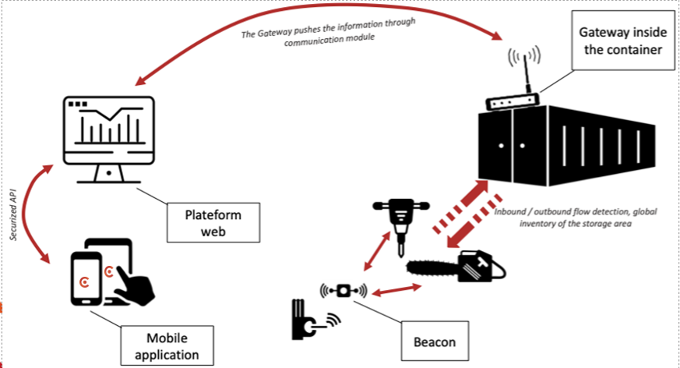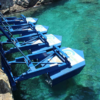The online Data Science and IoT for Port Logistics Conference gathered speakers and participants from all over the world. We are all interested in innovation, but what are actually the applications of the smart ports that we can expect in the future? We present you 4 innovative ideas that were presented during the conference.
1) Automated applications

Several conference pitches focused on the use of automated applications, such as the Automated Transtainer RTG Crane, the ATM vehicle, the AIV Automotive Intelligent Vehicle, etc. It was very interesting to see what is already created and what is yet to come. Mr. Perey from the company Gaussin presented the ATM vehicle that has been developed to move trailers and can be driven by man or by computer. It also has a bigger version: the APM, which is made for ports and it is 100% electric. It can carry a container up to 75 Tons. The Automotive Intelligent Vehicle is also interesting for automated ports since it has been designed to reduce energy consumption and operating costs and meet space constraints. It doesn’t need a crane to put the container on the vehicle, which saves time and money.
2) Outdoor equipment managing
We have all done it before: we lend something to a friend and they accidentally forget to give it back, or they only return it after a long time. It can also happen on the work floor, especially with outdoor equipment. However, Mr. Melchior from CET Charlie Solutions came with a very interesting idea. He created an IoT system that enables you to find where your equipment is. It offers a solution to the problem that today you have the visibilization of your output and input of the warehouse but not where the equipment is. The application allows you to see where it is when the equipment is outdoors. It has a little sensor beacon which you can put on every container or equipment. Data will be sent to a platform and it will send an notification to your mobile application. For example: when an equipment doesn’t return to its storage on time, it will cause an alert. This application can certainly be helpful for smart port developers.
3) Transport cost calculator
How easy would it be if you placed an order by email and the supplier’s computer automatically recognized the order? Well, good news: it already exists. Mr. Carlan from Digitrans developed a transport cost calculator by using several algorithms. When someone sends an email or a document, it will be ‘translated’ by Artificial Intelligence which uses text recognition.
He also explained the meaning of his enriched planning data. It has different unique services such as: an order status based on TMS and track-and-trace data with filtering options, an order-client match alert and an order ETA and track-and-trace system. Digitrans developed a planning assistant tool for complementary tasks with unique services such as the possibility to check the effects of a complementary trip on the planning, to assign a group of orders to the planning, to define own criteria and to check the planning for potential conflicts. They also created a cost calculation tool and dashboarding that shows data like cost structures, delay evolution, average loaded and empty trip length.
4) Meteorological invention
Mr. Dekker from CET IBM GBS presented their digital twins. This means a digital representation of a physical thing combined with Internet of Things. A digital twin is a representation of a cyber-physical system across its life-cycle that is continuously updated from design and operational data using machine learning, and reasoning to augment decision making processes of humans. Digital twins are becoming a business imperative, covering the entire lifecycle of an asset or process and forming the foundation for connected products and services. The managing context is actually about Hydreo/ Meteo part (for example: Tide, HoT, Wind, Visibility, Predictions). You can learn from operational data which includes IoT data, asset data, physical locations or assets. Predicting the weather better with actual data on tides, winds etc. could be really beneficial for ports.
Jari Hellemans



One comment on „4 Smart port applications of the future – Conference takeaways”